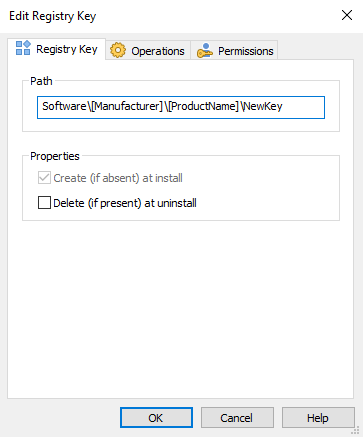
Understanding and Utilizing the Registry Keys Tab in Windows Systems

Understanding and Utilizing the Registry Keys Tab in Windows Systems
Table of Contents
- Introduction
- Registration
- Using Advanced Installer
- GUI
- Working with Projects
- Installer Project
* Product Information
* Resources
* Files and Folders
* Tiles
* Java Products
* Registry
* Registry Value Dialog
* Registry Value Removal Dialog
* Registry Key Dialog
* Registry Key Tab
* Registry Key Operations Tab
* Permissions Tab - Installer Project
* App-V Options Tab - Registry Key Dialog
* Registry Picker Dialog
* Registry Key Picker Dialog
* Import Registry File (Advanced)
* Wow6432Node Registry Key
* File Associations
* Assemblies
* Drivers
* Services
* Package Definition
* Requirements
* User Interface
* System Changes
* Server
* Custom Behavior - Patch Project
- Merge Module Project
- Updates Configuration Project
- Windows Store App Project
- Modification Package Project
- Optional Package Project
- Windows Mobile CAB Projects
- Visual Studio Extension Project
- Software Installer Wizards - Advanced Installer
- Visual Studio integration
- Alternative to AdminStudio/Wise
- Replace Wise
- Migrating from Visual Studio Installer
- Keyboard Shortcuts
- Shell Integration
- Command Line
- Advanced Installer PowerShell Automation Interfaces
- Features and Functionality
- Tutorials
- Samples
- How-tos
- FAQs
- Windows Installer
- Deployment Technologies
- IT Pro
- MSIX
- Video Tutorials
- Advanced Installer Blog
- Table of Contents
Disclaimer: This post includes affiliate links
If you click on a link and make a purchase, I may receive a commission at no extra cost to you.
Registry Key Tab

Registry Key
Path
This points at the registry’s key location. This path is localized .
Properties
- Create (if absent) at install
- this option makes sense only if the registry key does not contain a value. If this option is selected the registry key will be created at install time if it is not present.
- Delete (if present) at uninstall
- with this option enabled the key is to be deleted, if present, with all of its values and subkeys, when the component is uninstalled. The key will also be deleted even if no values are in it.
If the registry key contains at least a value these options are not needed. The registry key will be automatically created at install time and deleted during uninstall.
Did you find this page useful?
Please give it a rating:
Thanks!
Report a problem on this page
Information is incorrect or missing
Information is unclear or confusing
Something else
Can you tell us what’s wrong?
Send message
Also read:
- [New] 2024 Approved Premiere Cinematic Glimpses Series
- [New] 2024 Approved The Comedic Journey An Evaluation of 'Goofy Adventures'
- 2024 Approved Android's Step-by-Step to Rotate & Unite Video Files
- 2024 Approved Top Tips for Procuring High-Quality Background Imagery
- Audience-Grade Sound Recording with Audacity
- Complete Guide on Eliminating 'Computer Block' Scam Virus - Effective Steps with MalwareFox
- Dialogue Dynamics Secrets to Great Screenwriting
- Excellent Strategies to Project Apple's Tablet Screen Onto Laptop or Desktop
- How to Identify & Eliminate Tracking Cookies Caused by Adware
- Identifying and Eliminating the Amazonaws Virus: Expert Tips From MalwareFox for a Clean System
- Solutions to Spy on Google Pixel 7a with and without jailbreak | Dr.fone
- Streamlining Your Gaming Experience Windows 11 Edition for 2024
- Unleash Vivid Colors and Rapid Refresh: The Full Review of the ViewSonic OLED Gaming Masterpiece
- Unlock Exclusive Perks: Your Guide to ApowerMirror's Member Advantages
- Title: Understanding and Utilizing the Registry Keys Tab in Windows Systems
- Author: Paul
- Created at : 2024-10-08 07:05:00
- Updated at : 2024-10-11 05:00:47
- Link: https://fox-metric.techidaily.com/understanding-and-utilizing-the-registry-keys-tab-in-windows-systems/
- License: This work is licensed under CC BY-NC-SA 4.0.